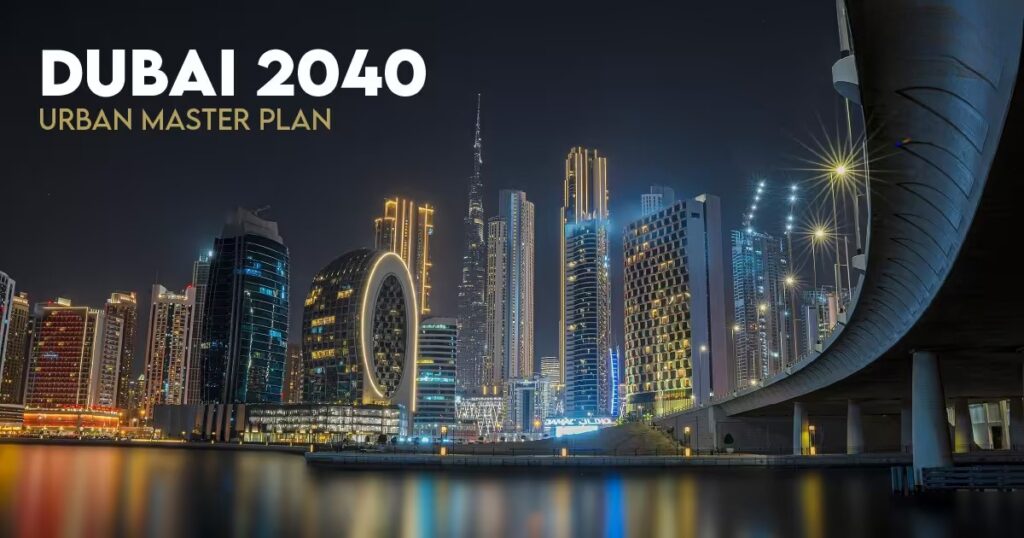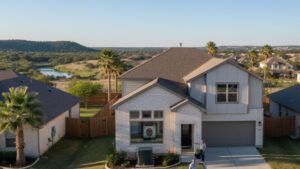
Dubai 2040 Urban Master Plan
Dubai 2040 Urban Master Plan: Shaping the Future of the Emirate
Dubai has long been known as a city of ambition—skyscrapers, luxury, fast growth. But as it nears 2025 and looks ahead to 2040, the authorities have laid out a deliberate roadmap to ensure that growth is sustainable, inclusive, and enhances quality of life. The Dubai 2040 Urban Master Plan (launched in 2021) is that roadmap. It provides a blueprint for how Dubai will develop over the next two decades across infrastructure, environment, mobility, community, and heritage.
In this article, we’ll explore what the plan aims to achieve, its major features, how it proposes to handle growth, and what it means for residents, investors, and the environment.
What is the Dubai 2040 Urban Master Plan?
The Dubai 2040 Urban Master Plan is the seventh large-scale planning initiative since the 1960s. Its purpose is to integrate all lower-order development plans, align urban growth with economic priorities, and ensure that future expansion is balanced between modern infrastructure, livability, and environmental sensitivity.
By 2040, Dubai aims to grow its population from around 3.3 million (residents in 2020) to about 5.8 million. The plan is not merely about increasing numbers, but improving how people live: reducing commuting times, ensuring access to public services, increasing green and open spaces, and preserving the character of older neighbourhoods.
Key Objectives & Strategic Goals
Here are the main pillars that define the Dubai 2040 plan:
- Vibrant, Healthy, Inclusive Communities
The plan sets out to develop communities that provide not just housing, but access to healthcare, education, leisure, and social infrastructure—all within reach. The idea is that residents of all income levels can benefit. There is explicit focus on equitable access to services. - Sustainability & Environment
Environmental sustainability is deeply embedded. Some targets include doubling green and leisure spaces; having 60% of the emirate’s area be nature reserves and rural natural land; expanding green corridors; increasing beaches’ public access by 400%; and improving resource utilization. - Efficient Mobility & Transport
The plan aims for more sustainable, flexible mobility. This includes expanding public transport, creating walkable and bike-friendly neighbourhoods, increasing development density around transit hubs, encouraging mass transit, pedestrian movement, cycling, etc. The goal is to make many daily needs reachable within shorter distances. - Optimised Land Use & Economic Development
Rather than unchecked sprawl, Dubai 2040 focuses on optimising use of space, utilising vacant or underused urban spaces, and aligning land use with economic activities. It designates five main urban centres (existing and new) around which growth will be structured. This helps in distributing development, reducing congestion, and fostering zones for innovation, tourism, business, culture. - Preservation of Heritage & Culture
Dubai’s history, urban heritage, and older communities are given importance. The plan seeks to protect and strengthen the identity of older neighbourhoods, preserve cultural landmarks, and ensure that as the city modernises, it retains its roots. - Governance, Regulation & Data
To ensure these changes are effective, Dubai will put in place updated legislation, a governance model that coordinates different stakeholders, and improved data and planning tools for decision-making and transparency.
Major Features & Outcomes to Expect by 2040
With the strategic goals in place, here’s what Dubai 2040 promises in practical terms:
- Green & Recreational Spaces to Double: Parks, public open spaces, leisure areas will significantly expand.
- 60% of Dubai as Nature Reserves / Rural Areas: Very large portion of land dedicated to preserving natural environments.
- Massive increase in Public Beaches: Public beach length is planned to increase by 400%.
- More Land for Commercial, Tourism, Education, Health:
• Commercial land area set to increase significantly; tourism/hotel land use to grow.
• Education / healthcare facilities land to increase by 25%. - Growth around Five Urban Centres:
• Existing: Deira & Bur Dubai; Downtown & Business Bay; Dubai Marina & JBR.
• New: Expo 2020 Centre; Dubai Silicon Oasis Centre. Each urban centre becomes a hub with infrastructure, housing, services. - Hierarchy of Communities: Neighbourhood → Community → District → Sector → Multi-Sector → Town, based on population sizes. This is to ensure services are scaled appropriately and localised.
Implications & Benefits
What does all this mean if you live in or invest in Dubai? Here are some likely implications:
- Improved Quality of Life: More green spaces, easier access to amenities, more walkable and bike-friendly areas—all improve daily living.
- Reduced Travel & Commuting Strain: If transit oriented development works, people will spend less time commuting. More density around transit hubs, better public transport, possibly less traffic.
- More Affordable and Inclusive Housing: Greater attention to mixed-income housing and integrated communities. The hope is that more people can find housing that matches their needs and budget without being far from services.
- Environmental Benefits: Better air quality, preservation of natural areas, lower resource wastage, more sustainable buildings and infrastructure—important for climate resilience.
- Commercial & Tourism Growth: More land allocated for hotels, tourism facilities; the plan could draw more investors, increase economic diversification.
- Preservation of Culture: Older districts will be protected, heritage preserved; Dubai might avoid losing all its older identity in the rush to modernise.
Challenges & Considerations
Ambitious plans often come with challenges. Some of the key issues Dubai will need to manage:
- Implementation & Pace: Building infrastructure, regulatory changes, and executing big urban projects take time, coordination, and large investments. Delays are possible.
- Cost & Funding: Expanding green areas, public transport, affordable housing, etc., requires large capital. There must be sustainable funding models.
- Balancing Growth & Conservation: As urban areas densify, preserving heritage and environment without compromising growth is tricky.
- Climate & Environmental Constraints: Dubai’s desert climate poses issues—heat, water scarcity, rising temperatures. Plans like green corridors, tree planting, etc., must consider suitable species, maintenance, shade, cooling strategies.
- Social Equity: Ensuring affordable housing is truly accessible, that lower-income residents benefit similarly to others; avoiding gentrification in upgraded areas.
What It Means for Investors & Stakeholders
For property developers, businesses, residents, and policymakers, Dubai 2040 offers both opportunity and responsibility.
- Investors will find value in areas earmarked for growth—urban centres, mixed-use developments, transit corridors. Properties near planned transit or green-space expansions may appreciate more.
- Developers can align their projects with sustainability, mixed usage, real-estate that reflects what future residents will want: accessibility, amenity, walkability.
- Residents stand to benefit from improved living conditions, better mobility, more leisure and community spaces—but they should also engage with feedback/consultation, especially in older neighbourhoods.
- Policymakers & Urban Planners will need to ensure that legislation (zoning, building codes etc.) keeps up, that governance frameworks are in place, and that implementation is transparent and data-driven.
Conclusion
The Dubai 2040 Urban Master Plan is more than just another expansion plan—it’s a vision for a future Dubai where growth does not compromise quality of life, heritage, or the environment. It aims to balance ambition with responsibility, modernisation with tradition.
If executed well, by 2040 Dubai could emerge as one of the most livable, sustainable, and equitable global cities—with lush green spaces, walkable neighbourhoods, efficient transport, cultural vibrancy, and strong economic sectors. And while challenges undoubtedly lie ahead, the blueprint is promising.

